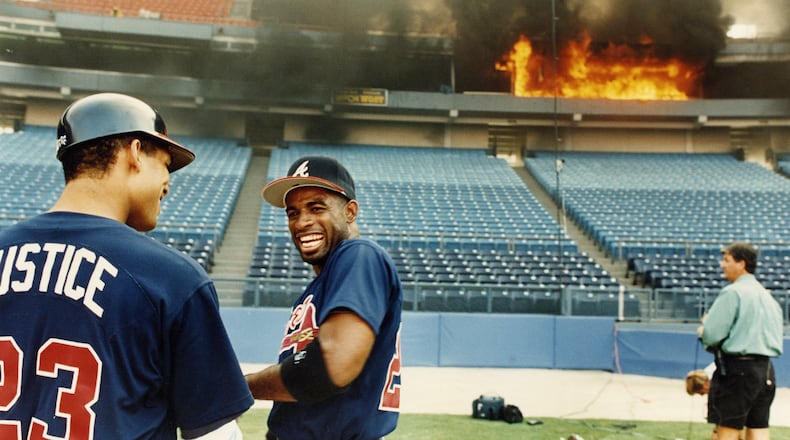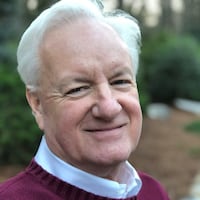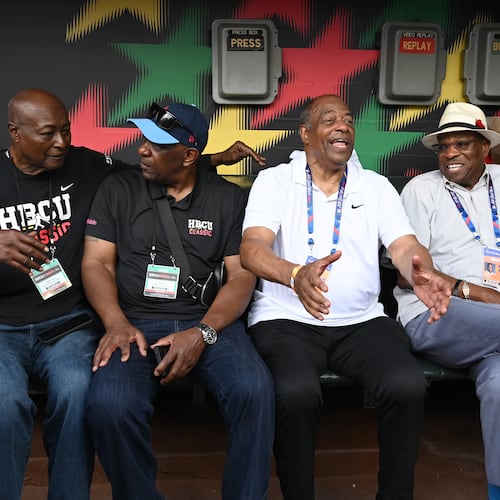Editor's note: At a time when sports are shut down, including the canceled Final Four in Atlanta and many other postponed events, we take a look (in no particular order) at some of the bizarre moments from Georgia sports history.
The Braves were hoping for a spark on July 20, 1993.
They had fallen nine games behind the San Francisco Giants in the National League West because of a struggling offense. But slugging first baseman Fred McGriff was on the way, set to join the Braves that day after he was acquired from the San Diego Padres for three minor leaguers.
“Maybe Fred will be the spark,” Braves second baseman Mark Lemke said when the trade was made.
As it turned out, McGriff did ignite the Braves’ offense. But the bigger spark at Atlanta-Fulton County Stadium on July 20, 1993, came from a can of Sterno that was being used to heat catered food in an unattended suite near the press box less than two hours before the scheduled first pitch.
It started a fire that spread rapidly along the club level, engulfing the Braves’ radio booth and five other booths, causing more than $1.5 million in damage and claiming a place on any compilation of bizarre moments in Atlanta sports history.
“I remember being back in the production truck … when someone said the stadium was on fire,” recalled Howard Feinberg, a member of the TBS production crew that day. “I looked at all the camera feeds and saw the fire was in the press box area. I left the truck, ran down to the field and grabbed the camera that was at our low home (plate) camera position and started shooting the scene.
“I remember the fire trucks on the field, players milling about, and after the fire was finally put out I was allowed to head back to the truck. … Sections of the stands under the press box were roped off, and our crew (did) an awesome job of moving the entire broadcast booth to a safe section of the stadium so we could broadcast the game.”
Yes, the game against the St. Louis Cardinals was played, beginning two hours later than scheduled. TBS broadcasters called the action from a makeshift table set up on the club level between home plate and first base.
I.J. Rosenberg, the Braves beat writer for The Atlanta Journal-Constitution during much of the 1990s, was on the field, watching batting practice, when the fire broke out. He recalls that he felt the heat of the blaze even from that distance. Of all the games he covered, he ranks this one among his three most memorable nights at the ballpark.
“Other than the Sid Bream slide (in Game 7 of the 1992 National League Championship Series) and the win in Game 6 of the 1995 World Series, the fire game is the one I remember most,” Rosenberg said last week.
Batting practice continued briefly after smoke began to billow from the club level at about 5:55 p.m. But the fire, which started in a hospitality booth leased by two local radio stations, kept growing, and the smoke kept thickening. A metal stadium support girder exploded. At one point, flaming debris dropped into the lower-level seats.
Among those watching from the field was Cardinals manager Joe Torre, who as a Braves catcher had hit two home runs in the first regular-season game in the same stadium in 1966 and as the Braves’ manager had led the team to a division championship there in 1982.
“I kept looking at the fire and at (David) Justice in the batting cage,” Torre said. “It was a strange scene.
“And then all of a sudden you heard this noise. Glass was flying. The only thing I’ve seen like this before was when I was at the (1989) World Series earthquake in San Francisco.”
As the fire spread and a loud explosion seemed to shake the stadium, players and coaches, who had been gathered around home plate for batting practice, headed to the outfield, farther from the flames.
But first, Lemke and shortstop Jeff Blauser posed for a photo with their arms around each other’s shoulders, the raging fire overhead. Snapped by long-time Braves official photographer Walter Victor, the photo hung for years in the Baseball Hall of Fame in Cooperstown, N.Y.
"It's the only photo I have up in my house," Lemke told the AJC in 2015. "We kept turning around saying, 'When are they going to get up there and get that fire?'"
Credit: Mikki K. Harris
Credit: Mikki K. Harris
The Braves had sold 49,072 tickets for the game, not unusual even on a Tuesday night in the summer of 1993, but most fans were still on their way to the stadium or outside the gates when the fire began. An estimated 3,000 early arrivals were evacuated, none reported injured. Still, the incident raised alarms at the time about what might have happened if the stadium had been full of fans.
“It was an unfortunate circumstance at probably the most fortunate time,” John Schuerholz, then the Braves’ general manager, said. His suite was among those damaged by the fire.
More than 40 firefighters battled the four-alarm blaze. They struggled to get water hoses to the fire, having to traverse the stadium’s back-and-forth ramps because of the lack of stairwells. Concerns also were expressed about the lack of sprinklers, which weren’t required when the stadium was built in 1964-65.
After the fire was extinguished at about 7 p.m., fans continued to wait outside as Atlanta fire and buildings officials surveyed the damage. The stadium was deemed safe for a game, which began at 9:40 p.m. with four sections of seats closed on the levels both above and below the burned booths. Reporters wrote their stories from fans’ seats because smoke and water damage left the large press box unusable.
Ted Turner, then the Braves’ owner, was in attendance with his then-wife Jane Fonda and immediately sought the deeper meaning of the fire.
“I hope this is an omen that the Braves will get hot,” Turner said.
Omen or not, the 1993 Braves did catch fire, beginning that very night.
Trailing 5-0, they erupted for five runs in the sixth inning, capped by what Rosenberg’s game story described as the night’s “second-biggest explosion”: McGriff’s first homer as a Brave, a two-run shot to tie the score. The Braves went on to beat the Cardinals 8-5, the game ending after midnight.
“Fred sure lit a fire under us, I guess,” Braves pitcher Tom Glavine said that night.
The Braves won eight of their next nine games and 38 of their next 49 to overcome the nine-game deficit in the standings, moving into first place in the NL West by the second week of September. They went 51-17 from the night of the fire through the rest of the regular season, finishing with a 104-58 record and winning the division by one game over the 103-win Giants. McGriff indeed provided the spark the Braves sought, hitting .310 with 19 home runs and 55 RBIs in 68 games after the trade.
“The fire game turned that team around that season,” Rosenberg said. “Now, I don’t think it was because of the fire, but because of Fred McGriff.”
McGriff arrived in Atlanta a couple of hours ahead of the fire, and Braves manager Bobby Cox immediately inserted him into the lineup to replace Bream -- he of the famous slide that won the 1992 NLCS -- as the starting first baseman. McGriff was still introducing himself to his new teammates when a chunk of the stadium began to burn.
“I know I’m the most likely suspect,” Bream joked later, “but I swear I didn’t do it.”
About the Author
Keep Reading
The Latest
Featured





